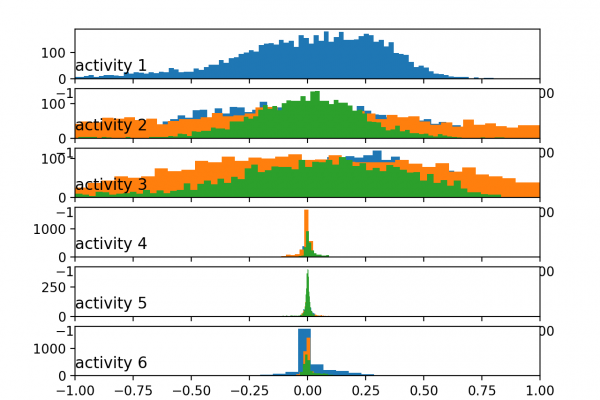How to Model Human Activity From Smartphone Data

Last Updated on August 5, 2019
Human activity recognition is the problem of classifying sequences of accelerometer data recorded by specialized harnesses or smart phones into known well-defined movements.
It is a challenging problem given the large number of observations produced each second, the temporal nature of the observations, and the lack of a clear way to relate accelerometer data to known movements.
Classical approaches to the problem involve hand crafting features from the time series data based on fixed-sized windows and training machine learning models, such as ensembles of decision trees. The difficulty is that this feature engineering requires deep expertise in the field.
Recently, deep learning methods such as recurrent neural networks and one-dimensional convolutional neural networks, or CNNs, have been shown to provide state-of-the-art results on challenging activity recognition tasks with little or no data feature engineering.
In this tutorial, you will discover the ‘Activity Recognition Using Smartphones‘ dataset for time series classification and how to load and explore the dataset in order to make it ready for predictive modeling.
After completing this tutorial, you will know:
- How to download and load the dataset into memory.
- How to use line plots, histograms, and boxplots to
To finish reading, please visit source site